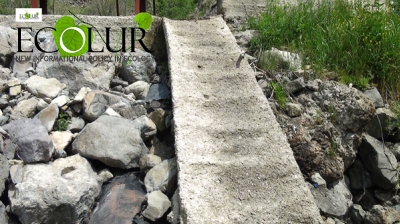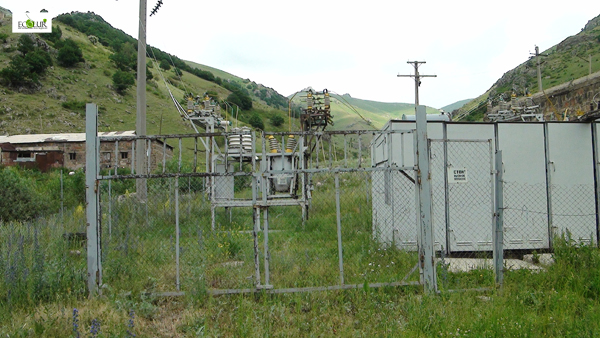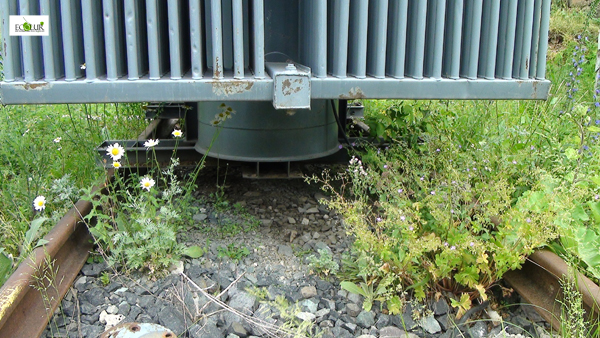

EcoLur
In the framework of the project entitled “Support to the Reforms of SHPPs through a Dialogue between the Public and The Ministry of Nature Protection of the RA for the Purpose of River Ecosystem Use” the expert group visited “Arjadzor” SHPP. “Arjadzor” SHPP is located in the administrative area of Meghradzor community, Kotayk Region. The SHPP is constructed on the Arjadzor River (length – 7.5 km). The SHPP is operated by “Arjadzor” LLC.
As a result of the monitoring, the expert group found out:
· The SHPP has been operating since 2012.
. The static pressure of the SHPP isn’t mentioned in the project. According to the project, estimated pressure –114.4m, the estimated yield used by the SHPP is 0.8m3/s, projected capacity – 738MW. According to the certificate issued by the Public Services Regulatory Committee, the factual useful delivery of the electricity is 1.13976 million kWh, according to the project, the estimated production is 2.37 million kWh, duration of license - 25.04.2012- 25.04.2027, water usage permit - 27.04.2011-27.08.2011.
· The constructed head section doesn’t comply with the projected solutions. According to the projected solutions, the concrete dam should have been 15 meters long and 2.5 meters high, but, as a matter of fact the factually constructed dam is 9 meters long and 2 meters high.
· The environmental flow is laid down 0.025 cum/s in the water usage permit. At the moment of observation, sufficient amount of environmental flow was ensured in the river.
· The environmental flow was let out of the river from the water intake section in the form unorganized waterfall. Under the project, the environmental flow should have been let out through 18-meter-long stair-like fish passway.
· The mark of the fish passway top is higher than that of the water intake, because of which the fish passway was completely dry. The fish passway doesn’t comply with the project at all. This structure has 7 meter length and 1 meter width instead of the projected 18 meters.
· You can meet the following fish species in the SHPP head section: brown trout -Salmo fario, the Kura barbell - Barbus cyri, and the South Caspian sprilin Alburnoides eichwaldii.
· The technical solutions for laying 1385-meter long pressure pipeline comply with the project. It’s completely laid in the trench pass. The land areas are completely reclaimed with recovered vegetation layer.
. Percentage correlation of aggregate lenght of SHPP direvation with the lenght of Aghstev River makes up 18.46%.
· Two turbines manufactured by local “Khorda” LLC have been installed in the SHPP building. Only one turbine was operating, which the worker substantiated with insufficient water in rivers.
· According to the water and economic estimates of the project, the SHPP should have operated all year round. Nevertheless, the two turbines of the SHPP work together only 1-2 months per year, while the operation of the SHPP is suspended for 4-5 months.
· The area of the station was not improved.
· Tree planting was conducted in the station area two years ago.
· Only SHPP substation is fenced where two turbines are installed without any oil-collecting system.
· According to the projected solution, a toilet (with water-proof well) has been constructed for the discharge of household wastewater.
· Landscape violations and landslides are not observed.
· There is no water-meter sealed by a relevant environmental body in the water intake.
· Semi-automatic management system operates in the station.
· Automatic management system of the water level in the water intake is missing.
Conclusion
The low productivity of the SHPP is conditioned with the following factors:
· Incorrect hydrological studies
· Non-substantiated water and economic estimates
· Low technical effectiveness of the turbines
Deviation from project solutions can cause additional environmental load on the river ecosystem and surroundings.
Proposals
· To carry out rehabilitation works of the water intake section.
· To exercise control over environmental flow.
· To replace turbines with turbines of high-technical effectiveness.
· To install a water-meter sealed by a relevant environmental body and semi-automatic water level management system.
· To install oil-collecting system in the turbine substation.
 |
 |
 |
 |
 |
 |
 |
 |
 |
 |
 |
The material was developed in the frames of “Supporting reforms in the sector of small hydro power plants through enabling a dialogue between civil society and the Ministry of Nature Protection for sustainable use of river ecosystems” supported by UNDP/GEF Small Grants Programme".
September 03, 2015 at 17:31
